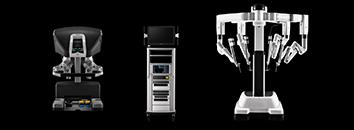Department of Medical Gastroenterology

Welcome to the Institute of Gastric Sciences at Gleneagles Aware Hospital, LB Nagar, Hyderabad which focuses on the health of the Digestive System or the Gastrointestinal (GI) tract. We are one of the best hospitals for Gastroenterology in Hyderabad for the treatment of Gastroenterology diseases. We perform Endoscopic procedures, in which we use specialised instruments to view the GI tract and make a diagnosis.
The GI system:
- Digests and moves food
- Absorbs nutrients
- Removes waste from your body
Gastroenterology hospital focus areas of care include,
- Hepatology, which focuses on the diagnosis and treatment of liver diseases, gallbladder, biliary tree, and pancreas
- Pancreatic-biliary Disorder
- Liver Transplantation
- Inflammatory Bowel Disease (IBD), or Chronic Inflammation of your Digestive Tract
- Gastrointestinal Cancer
- Endoscopic surveillance
- Reflux Esophagitis which is generally due to Gastroesophageal Reflux Disease
Gastroenterology Hospital are experts in managing
- Acute Ulcer / GI Bleed
- Acute Pancreatitis
- Alcohol-Related Liver & Pancreas Problems
- Foreign Body ingestion round the clock
Our hospital is a centre of excellence, providing comprehensive & cutting-edge services for all Gastroenterological and related conditions. To meet this objective, the centre is equipped with state-of-the-art infrastructure and led by a dedicated team of the best Gastroenterologists and surgeons in Hyderabad ably supported by well-trained nursing assistants and para-medical staff to lend excellence-driven, patient-centric care.
Diagnosis of Gastric Obesity Disorders & Diseases:
We are committed to ensuring that your experience with us is relaxed and worry-free, right from consultation through recovery. The first step is to reach an accurate diagnosis of Digestive Disorder. We begin this by undertaking a thorough medical history, understanding the symptoms you have experienced, and note down any other pertinent information that you share that will help accurately diagnose the condition. A physical examination is also carried out to help assess the problem more thoroughly. However, many patients require a more extensive diagnostic evaluation through a laboratory test, imaging studies, and endoscopic procedures, which will help us identify the underlying condition more accurately. We provide specialised diagnosis and therapeutic procedures and services to diagnose and treat patients with a wide variety of Gastrointestinal Disorders. Our centre is equipped with cutting-edge Gastroenterology equipment to support diagnosis and treatment and thereby provide the best possible patient care. We provide the best treatment and care for Digestive Disorders and related conditions. Some vital diagnostic procedures that we offer to help diagnose and treat Gastrointestinal and Liver conditions include the following:
Image Tests:
- Colorectal Transit Study – This test helps in understanding how well food moves through the colon.
- Computed Tomography (CT) Scan – Detailed images of the body, including details of the bones, muscles, fat, and organs, can be obtained via CT, which is an imaging test that uses X-ray and computers.
- Defecography – This is used to identify completeness of stool elimination and any anorectal abnormalities. It evaluates the rectal muscle contraction and relaxation utilizing the X-ray of the anorectal area.
- Barium Enema – It is a test used to examine the large intestine, lower parts of the Small Intestine, and rectum using X-ray. It can identify strictures (narrowed areas), blocks or obstructions, and other problems.
- Magnetic Resonance Imaging (MRI) – It is a diagnostic test that produces detailed imaging of organs and structures within the body using a combination of large magnets, radio frequencies, and a computer.
- Magnetic Resonance Cholangiopancreatography (MRCP) – This test uses a combination of radio waves and magnets and is used to view the bile ducts.
- Oropharyngeal Motility Study – The patient is provided with small amounts of barium liquid to drink, and later, a series of X-ray is taken to evaluate what happens as the liquid is swallowed.
- Ultrasound – This test used high-frequency sound waves and a computer to create images of blood vessels, tissues, and organs.
Other Procedures:
- Anorectal Manometry – This is used for evaluating anorectal malformations and Hirschsprung disease, among other problems, by determining the strength of the muscles in the rectum and anus.
- Oesophageal Manometry – This is used to provide a complete view of the oesophagus to assess its function and is better over conventional manometric studies.
- Oesophageal PH Monitoring Study – This study is recommended for patients with Gastroenterology Reflux Disorder (GERD) or Acid reflux and who do not respond to the usual antacid treatments.
- Capsule Endoscopy – This is a Minimally Invasive Technique that is used to investigate Small Bowel and Oesophagus.
- Gastric Manometry – This is used for measuring electrical and muscular activity in the Stomach.
Endoscopic Procedures:
- Colonoscopy – This is used in screening for polyps and colon cancer and intestinal bleeding, and Inflammatory Bowel Disease.
- Endoscopic Retrograde Cholangiopancreatography (ERCP) – This is used for the diagnosis of any problems in the Gallbladder, Pancreas, Bile duct, and Liver and uses the power of X-ray and endoscope to diagnose the underlying condition.
- Esophagogastroduodenoscopy – This is used to examine the inside of the Oesophagus, Stomach, and Duodenum using an endoscope.
- Sigmoidoscopy – This is used for identifying the causes of Diarrhoea, Abdominal pain, Constipation, bleeding, and any abnormal growth in the Intestine by examining the inside of a portion of the Large Intestine.
- Upper Endoscopy – This is a Minimally Invasive Technique used to directly visualize the upper Gastrointestinal Tract for evaluation of disorders, including Acid Reflux, trouble swallowing, Abdominal pain, and Celiac disease.
Laboratory Tests:
- Faecal Occult Blood Test – The Faecal Occult Blood Test (FOBT) is a laboratory test that is used to check for the presence of hidden (occult) blood in the stool sample. Blood in the stool may indicate Haemorrhoids, Colorectal Cancer, or other conditions.
- Stool Culture – This is a test that is used to identify the presence of bacteria that causes infection in the lower GI tract.
Why Choose Us for Gastric Problems?
We are one of the best hospitals for Gastroenterology in Hyderabad. You will experience the best care and treatment here. All our technological advancements are solely dedicated to Gastroenterology and for the betterment of our patients. It is the combined effort of training and patience that makes our Gastroenterology department, class-apart, and that is why we are known for the treatment of Bowel Disorders, Pancreatic-biliary Diseases, and Liver Diseases. We will help you in going through all the options and assist you in making healthy and fully informed decisions.
We provide you with all the medical assistance for the best treatment for you. We make sure that you never have any doubts about the medication we provide. We have the most experienced doctors and specialists to give you expert advice when you have any confusion regarding any matter. We have grown continuously and evolved to meet the needs of the families we serve. Our department’s advantage is that, that we not only provide care and treatment but also promote preventive care by educating them about periodic comprehensive health check-ups.
Treatment of Gastric Obesity Disorders & Diseases?
Our team performs surgical treatment of diseases associated with the Gallbladder, Liver, pancreas, Hepatobiliary system, Oesophagus, Stomach, and Upper and Lower Gastrointestinal tract. However, not all patients would require surgery. We begin with initial investigations and recommend medicines/drugs to alleviate the condition. We advise and perform endoscopic evaluation of the Gastrointestinal tract to correctly identifying the underlying cause of the disease or condition and then personalise the treatment for every patient.
Procedure:
Our specialists perform a range of non-surgical procedures. This can include:
- Endoscopic ultrasounds to examine some internal organs and the upper and lower GI tract.
- Colonoscopies which help to detect Colon Cancer or Colon Polyps.
- Endoscopic Retrograde Cholangiopancreatography to identify Tumours, Gallstones, or scar tissue in the Bile duct area.
- Sigmoidoscopies which helps to evaluate blood loss or pain in the bowel.
- Liver biopsies help to assess Inflammation and Fibrosis.
- Capsule endoscopies help to examine the Small Intestine.
- Double-balloon Enteroscopy help to examine the small intestine.
Conditions treated include the following
We provide comprehensive treatment for a wide spectrum of Gastrointestinal disorders.
Gall Bladder:
- Gallstones
- Cholecystitis (inflammation) – Gall Bladder Cancer
Stomach and Oesophagus:
- Indigestion/ Acid Reflux/ Oesophagitis/ Gastritis /GERD
- Ulcers
- Hiatus Hernia
- Gastric Cancer
- Hpylori Related infection
Duodenum:
- Duodenitis (Inflammation)
- Ulcers
Liver:
- Cysts in Liver
- Liver Cancer
- Liver Cirrhosis
- Fatty Liver
Pancreas:
- Pancreatitis (Acute & Chronic)
- Pancreatic Cancer
- Pancreatic Inflammation
- Pancreatic Pseudo Cyst
Major Surgeries Performed: Cutting-edge Surgical Procedures for Delivery Exceptional Patient-outcomes
- Upper GI endoscopy
- Hiatus hernia repair
- Anti-reflux surgery
- Gastrectomy
- Laparoscopic Cholecystectomy
- Hepatectomy
- Pancreatectomy
- Splenectomy
- Esophagectomy
- Endoscopic Retrograde cholangiopancreatography (ERCP)
Our Doctors
View all
Dr Sivananda Reddy B
Consultant
MBBS, MD (Manipal), DM (Medical Gastroenterology)
- Does a gastroenterologist treat the Liver?
Gastroenterology hospital focus areas of care include Hepatology, which focuses on the diagnosis and treatment of Liver Diseases as well as Liver Transplantation.
FAQ
Why Choose Us
-
PATIENT EXPERIENCE
Your care and comfort are our top priorities. We ensure that the patients are well informed prior to every step we take for their benefit and that their queries are effectively answered.
-
LATEST TECHNOLOGIES
The Gleneagles Hospitals' team stays up to date on the advancements in medical procedures and technologies. Experience the Future Healthcare Technologies now at Gleneagles Hospitals.
-
PROVIDING QUALITY CARE
Strengthening lives through compassionate care, innovative therapies and relentless efforts. It reflects in the DNA of our passionate team of doctors and dedicated clinical staff.










